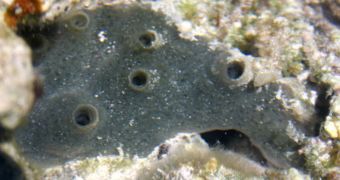Though they may not seem like much, sponges are actually very important organisms. They are believed to have lived as much as 650 million years ago, which means that they could be the first metazoans, or multicellular animal, to branch off after life first appeared on Earth. As such, their genomes are of extreme importance to science, because they may contain information linking the creatures to other animal descendants. Researchers at the Rice University recently took a closer look at the genome of the sponge called Amphimedon queenslandica, which lives in Australia.
The draft genome sequence the group obtained will in the near future allow geneticists to look at common DNA sequences that may be shared by metazoans. This may help them gain additional insights into how life developed as animal groups began branching off and defining themselves. The ancestor organism to all metazoans should have had a number of abilities, according to investigators. These include the capability to coordinate cell division, growth, specialization, adhesion and death, and all these features can easily be found in Amphimedon. This means that the ancestor from which the organism evolved also possessed them.
“What's exciting is the new things we're learning about animal evolution. For example, sponges have embryos, and having the genome helps us look at how they develop and make specific connections to developmental pathways in other animals. It's the kind of thing that will lead to a much clearer understanding of what the very first metazoans looked like,” says Rice assistant professor of ecology and evolutionary biology Nicholas Putnam. He joined the research back in 2006, while he was still working at the US Department of Energy's (DOE) Joint Genome Institute.
“We can now say that the large-scale patterns of genome organization we've seen conserved in other animal groups come from the very root of the animal tree. If the missing pattern is neutral, you'd say that somewhere along the history of those groups, the rate of (evolutionary) change sped up enough to break the connection. If it's functional, then somehow those groups overcame whatever constraint is on it in other lineages,” Putnam says. Details of the investigation appear in the latest online issue of the esteemed scientific journal Nature.

 14 DAY TRIAL //
14 DAY TRIAL //